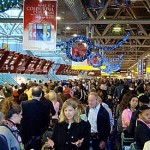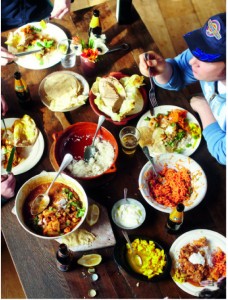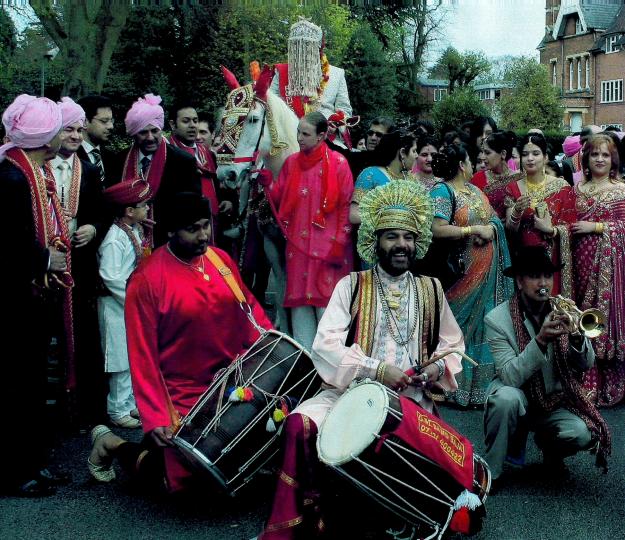This article is written by Seema Goswami
 A week ago, I landed at London’s Heathrow Airport, bleary-eyed and beleaguered after a long, sleepless flight. As I wheeled my trolley out of baggage claim and walked into a sea of expectant faces looking out for their loved ones to emerge, I was struck by a thought. I could just as well have landed in India, for all the visual clues I got about my destination.
A week ago, I landed at London’s Heathrow Airport, bleary-eyed and beleaguered after a long, sleepless flight. As I wheeled my trolley out of baggage claim and walked into a sea of expectant faces looking out for their loved ones to emerge, I was struck by a thought. I could just as well have landed in India, for all the visual clues I got about my destination.
The airport was run over with Asians, you had to search far and wide to catch even a momentary glimpse of a white face. And amid the cacophony of languages being bandied about – Gujarati, Punjabi, Urdu, Punjabi, even Tamil – it was difficult to catch a word of English.
But hang on, I told myself, maybe I was being a bit quick off the draw. Perhaps this was because a flight from India had just landed. And in keeping with sub-continental tradition, every member of the extended family had turned up to greet the new arrival.
But that didn’t explain why so many of them were holding up name tags and looking suspiciously like limo drivers. Or why all the service professionals had brown faces.
 On to the hotel. I checked in and began setting up my laptop only to find that my charger didn’t fit into the British-style plug points. I called down to reception for help. A young Indian boy rang the bell minutes later with a three-point adaptor. An hour later, room service was delivered by another Indian waiter. And going by accent alone, the guy who took my breakfast order was also from the Indian sub-continent.
On to the hotel. I checked in and began setting up my laptop only to find that my charger didn’t fit into the British-style plug points. I called down to reception for help. A young Indian boy rang the bell minutes later with a three-point adaptor. An hour later, room service was delivered by another Indian waiter. And going by accent alone, the guy who took my breakfast order was also from the Indian sub-continent.
The Indian theme continued apace throughout my London sojourn. As I trawled through the food halls of the local supermarket looking for my favourite dark chocolate with chilli, there was a familiar name wherever I looked: rogan josh, vegetable jalfrezi, mutton biryani, tandoori rotis, garlic naans, gajar halwa. Clearly, the British love affair with Indian food had gone beyond the tried-and-tasted chicken tikka masala, long touted as the country’s best-selling dish.
 Later, walking along the river over the weekend to sample the delights of the Thames Festival, the hegemony of Indian cuisine was clear. Of all the food stalls lined up along the streets, the ones with the longest queues were the ones selling Indian savouries (samosas, keema pao, chaat and the like). And the punters lining up seemed all too familiar with the fare on offer.
Later, walking along the river over the weekend to sample the delights of the Thames Festival, the hegemony of Indian cuisine was clear. Of all the food stalls lined up along the streets, the ones with the longest queues were the ones selling Indian savouries (samosas, keema pao, chaat and the like). And the punters lining up seemed all too familiar with the fare on offer.
 As I ambled further down, there was what looked like an Indian wedding party assembled outside a concert hall. Fat Punjabi matrons in glittery salwar-kameezes, young Gujarati girls in shiny saris and many pot-bellied men in long, ethnic kurtas milled outside the hall, where a popular Asian pop star was due to perform.
As I ambled further down, there was what looked like an Indian wedding party assembled outside a concert hall. Fat Punjabi matrons in glittery salwar-kameezes, young Gujarati girls in shiny saris and many pot-bellied men in long, ethnic kurtas milled outside the hall, where a popular Asian pop star was due to perform.
But then, Indian music was ubiquitous wherever I went in London. Eating at a popular Chinese restaurant in Soho, I listened to the latest Bollywood chartbusters on the muzak system. At the hairdresser, I tapped my foot along to some bhangra pop. Browsing at the perfume section at Liberty, I was startled to hear the remix of a popular Hindi film number on the in-store music system. Yes, whether it is the humble corner shop or the toniest of department stores, nothing seems to have escaped the great Indian Invasion. There was a time when my friends would use Hindi as a code language when shopping in London. ‘Yeh bilkul bakwas hai, ’ or ‘Bahut mehengi dukan hai’ or ‘Yeh kaun pehenega?’ were just some of the more polite things we said to each other as we rustled through the wares on offer.
Now, there’s no chance of indulging in such private conversations while in public. In nine retail outlets out of ten the shop assistants are of sub-continental origin. And even the ones who don’t speak much Hindi, Gujarati, Bengali or Punjabi, understand enough to know that ‘bakwas’ is not exactly a compliment. Even as I was mulling over all this cumulative evidence, on my last day in London came the clincher.
 Asda, the supermarket chain, announced that it was launching a range of Asian clothing in response to ardent customer demand. This would be made with Indian collaboration, with Indian fabrics and Indian designs, taking in everything from salwar kameezes and churidar kurtas to short kurtis and dupattas.
Asda, the supermarket chain, announced that it was launching a range of Asian clothing in response to ardent customer demand. This would be made with Indian collaboration, with Indian fabrics and Indian designs, taking in everything from salwar kameezes and churidar kurtas to short kurtis and dupattas.
According to Asda, while this range was primarily aimed at its Asian clientele, it would also appeal to Western customers on purely aesthetic grounds. Western women could wear the kurtis as short dresses, convert the churidars into leggings and the like. And going by all the sparkly stuff on sale, clubbing would perhaps take on a completely different look now with Bollywood glamour coming to the British high street.
So, what’s the big deal, you ask? Hasn’t Britain become a huge melting pot of multiple ethnicities, anyway? Isn’t multi-culturalism the new buzzword in these parts nowadays?
Well actually, if you ask me, the media mavens and social commentators may well have got it just a little bit wrong. The only culture that seems to be flourishing in this new ethnic Britain is a robust sub-continental one.
So instead of labelling Britain as a hub of multi-culturalism, it might be more accurate to say that London is a part of England that will be forever India.
Seema Goswami
2 Dec 2011
http://travel.hindustantimes.com/travel-stories/the-empire-strides-back.php